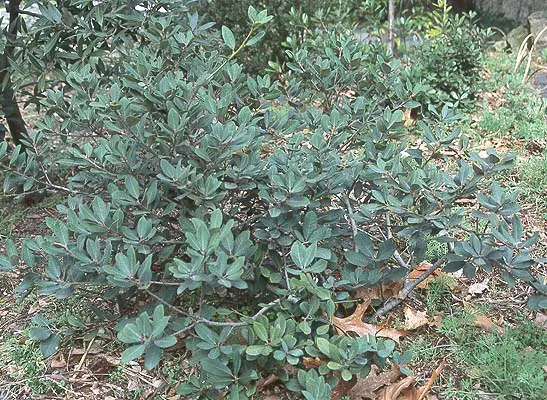
Notholithocarpus densiflorus, commonly known as the tanoak or tanbark-oak, is an evergreen tree in the beech family (Fagaceae), native to the western United States, in California as far south as the Transverse Ranges, north to southwest Oregon, and east in the Sierra Nevada. It can reach 40 m (130 ft) tall (though 15-25 m (49-82 ft) is more usual) in the California Coast Ranges, and can have a trunk diameter of 60-190 cm (24-75 in).
Tanbark-oak was recently moved into a new genus, Notholithocarpus (from Lithocarpus), based on multiple lines of evidence. It is most closely related to the north temperate oaks, Quercus, and not as closely related to the Asian tropical stone oaks, Lithocarpus (where it was previously placed), but instead is an example of convergent morphological evolution.
Tanoak is very tolerant, and it commonly occurs in any crown position. Seedlings and saplings are quite common in the understory of hardwood or conifer stands. Understory tanoak can grow rapidly in response to death or removal of overstory trees. Tanoak of any age seem to prefer some shading from codominant stems within clumps. Sudden, excessive exposure of stems or crowns is detrimental. Tanoak typically occurs as a codominant tree with other hardwoods, often with an overstory of conifers. Pure stands of tanoak are also common during early stages of succession after fire or logging, however.
As a califoiinria native, it can be a good choice for local landscapes, however it should be regularly pruned, lightly irrigated, and monitored for diseases such as sudden oak death (SOD).







